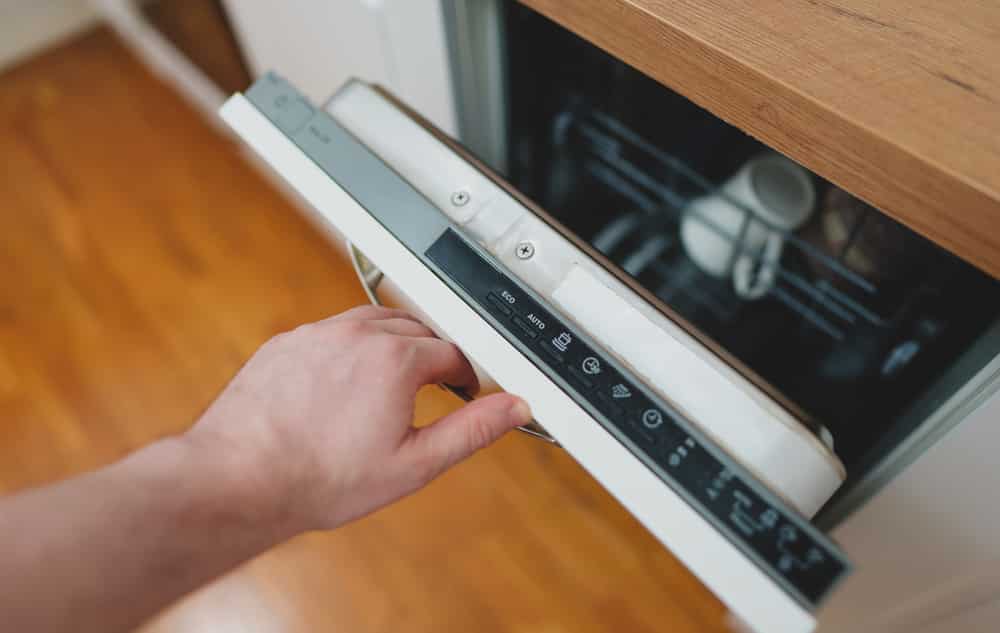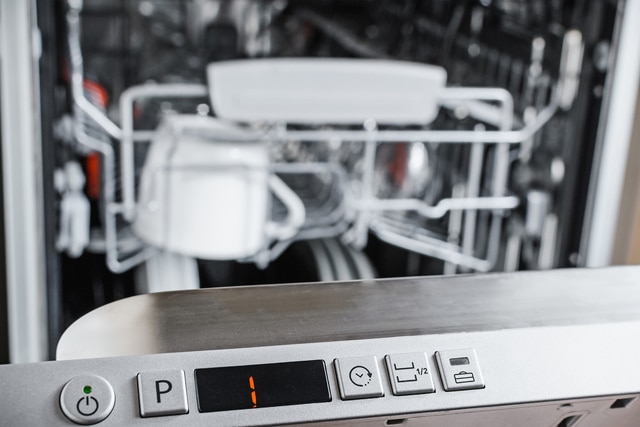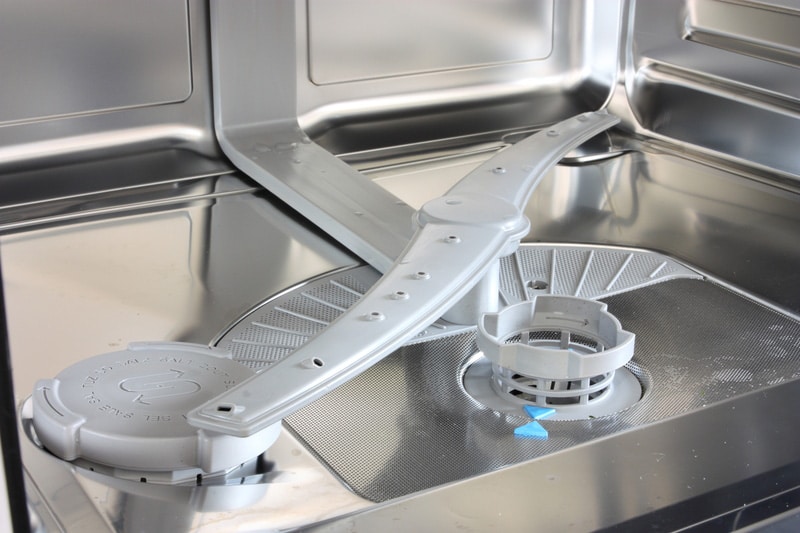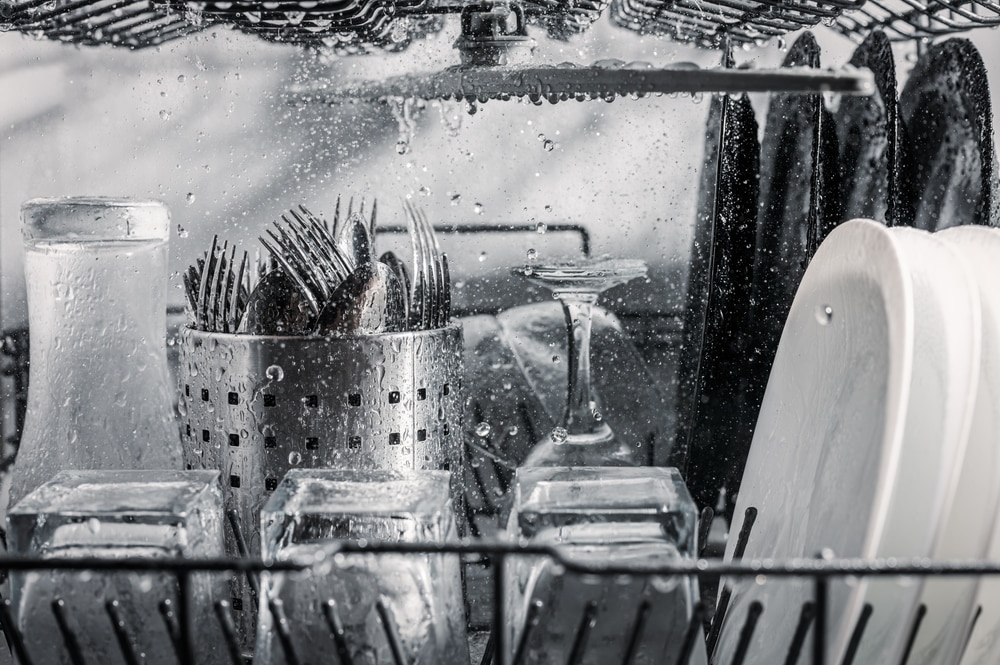
The dishwashers promise convenience and ease to homeowners as they help wash the dishes while you do other chores. Bosch has a wide range of dishwashers with easier installation and an auto-wash feature.
An auto-wash feature detects how dirty the dishes are and automatically selects the water temperature, amount of water, and cycle duration to ensure clean dishes. However, if auto-wash LED is blinking on your Bosch dishwasher, the dishwasher won’t start the cleaning process. So, let’s check out some solutions.
Fixing Bosch Dishwasher Auto Wash Light Blinking
- Power Cycle The Dishwasher
The first solution is to turn off the dishwasher for five minutes as it helps reset the unit. For this purpose, you need to disconnect the power cord for five minutes.
Apart from disconnecting the power cord, you can also turn off the dishwasher by switching off the circuit breaker. So, just power cycle the dishwasher, and the light will stop blinking.
- Door Latch
An auto-wash LED blinks when it’s unable to start the dishwashing cycle, and it mostly happens when the dishwasher’s door is open. In case you have closed the door, but it’s not secured, it’s likely that the door latch is damaged.
When the latch isn’t engaged, the switch prevents the dishwasher from starting the wash cycle. So, whenever you close the door, listen for a clicking sound.
If there is no clicking sound, the door latch is damaged, and the door won’t be securely closed. If that’s the case, you’ll have to hire a repairman and get the door latch replaced.
- Safety Lock
Bosch dishwashers are designed with a child lock that prevents kids from changing the settings or opening the dishwasher’s door. However, if the child safety lock is engaged, you won’t be able to make changes to the dishwasher’s functions, including auto-wash.
For this reason, press the child lock button on the dishwasher’s digital panel to deactivate it and then turn on the dishwasher’s auto-wash feature again. As a result, the cleaning function will start, and the light will become stable.
- Door Latch Switch
A broken door latch assembly can negatively impact the dishwasher door’s closure, which prevents the initiation of an auto-wash feature. To check the door latch switch, you have to take off the internal door panel, and the latch assembly will be on the door’s top.
You have to ensure that the latch is engaged to the latch switch whenever it’s inserted into the assembly. If the switch is connecting to the assembly properly, but the light is still blinking, you should check them for continuity.
We recommend using a multimeter on the RX1 setting and connecting it to the switch’s terminal probes. The reading must be near zero or zero – if the reading is different from the recommended value, you’ve to replace the switch as well as the latch assembly.
- Timer
The timer is responsible for controlling the washing cycle’s stop and start times. The timer is located on the control panel, and it won’t be able to control the dishwasher’s auto-wash function if the timer is broken or damaged.
The easiest solution is to test the timer with the help of a multimeter – you’ve to set it on the RX1000 setting and touch the timer’s contacts with the multimeter’s probes.
The reading should be between 2000 ohms to 3500 ohms. However, if the reading is any different, the timer is damaged and must be replaced.
- Selector Switch
The selector switch is responsible for determining the wash cycle settings for every load. The switch is located on a control panel, and you have to test every button on the switch. For this purpose, set the multimeter to RX1 and connect its probes with the switch terminals.
The ideal reading is infinity or zero. However, if the reading is different from zero or infinity, you should replace the selector switch (the selector switch can be purchased from the hardware store).
- Motor Start Relay
The motor start relay provides signals to the dishwasher to start operating. So, if an auto-wash feature is enabled but it’s not starting the wash cycle, you have to inspect the motor start relay. The relay is located behind the dishwasher’s lower access panel.
You’ve to take off the relay and test its coil with the help of a multimeter – the reading should be zero. The coil with a different reading has to be replaced.
On the other hand, if the reading is normal, but the relay seems frayed or melted, it must be replaced immediately because the relay can burn and create a fire hazard.
A thermal fuse is responsible for protecting electrical components from overheating. However, if the thermal fuse has blown, the dishwasher’s functions will be impacted. To fix the problem, you have to access the control board, locate the thermal fuse, and see if it’s blackened.
The blackened thermal fuse indicates damage. Before you inspect the thermal fuse, make sure you disconnect the dishwasher from the power socket to protect yourself from electrocution.
- Drive Motor
The drive motor is responsible for controlling water flow into the dishwasher. If the drive motor is damaged, the dishwasher won’t be filled with water, and the auto-wash LED will keep blinking.
The drive motor is located behind the lower access panel, and you have to test it with a multimeter – the reading must be zero. If there is no reading or reading is higher than zero, the drive motor is damaged and has to be repaired.
- Water Temperature
For the washing cycle to complete, the water in the dishwasher should be around 120 degrees Fahrenheit.
Bosch dishwashers are designed to heat water to the ideal temperature, but if the water isn’t heating to the recommended temperature, the wash cycle won’t start, and the light will keep blinking.
In most cases, the water heating issue is caused by a broken water heater. We recommend that you hire an electrician to get the water heater checked and repaired.
- Filter
The majority of Bosch dishwashers are designed with self-cleaning filters. These filters can get clogged over time. A clogged filter won’t allow water to flow into the dishwasher, hence the blinking light.
For this reason, you have to locate the filter under the dishwasher racks and take it out – you can use hot water for cleaning and rinsing the filter. You can also leave the filter overnight in vinegar and soap solution if the grime layer is too thick.
Once the filter is cleaned, reinstall it in the dishwasher and try using the wash cycle again. However, if cleaning doesn’t work, install a new filter.
- Spray Arm
Bosch dishwasher is designed with spinning spray arms that are responsible for shooting water through holes, commonly known as jets. However, if the spray arm or jets are clogged, there won’t be enough water pressure, and the washing function won’t start.
To resolve this problem, you have to take off the spray arm and clean it with a soft brush. In addition, the jets can be cleaned with the help of a toothpick. Once it’s cleaned, the water pressure will be optimized, and the wash cycle will start working normally.
- Inlet Valve
The inlet valve allows water to flow into the dishwasher, and if it’s damaged, the water flow into the dishwasher will be disturbed, and washing will be disrupted. The most common symptoms of a broken inlet valve are hammering noise and blinking light.
Be mindful that locating and repairing the inlet valve can be complicated. Therefore, it would be better to hire an electrician.
- Control Board
If nothing seems to work, it’s likely that the electronic control board is damaged and is unable to send signals to the control panel for operating the auto-wash feature. So, you must hire an electrician and get the control board checked by a professional – if the control board is damaged, it should be replaced.
The Bottom Line
This article discusses common reasons and solutions for the auto wash light blinking error in Bosch dishwashers. These dishwashers are sturdy, but they need regular maintenance to keep operating without any error.
So, get your unit serviced according to the instructions from the manufacturer. This will ensure that no internal components are permanently damaged.




